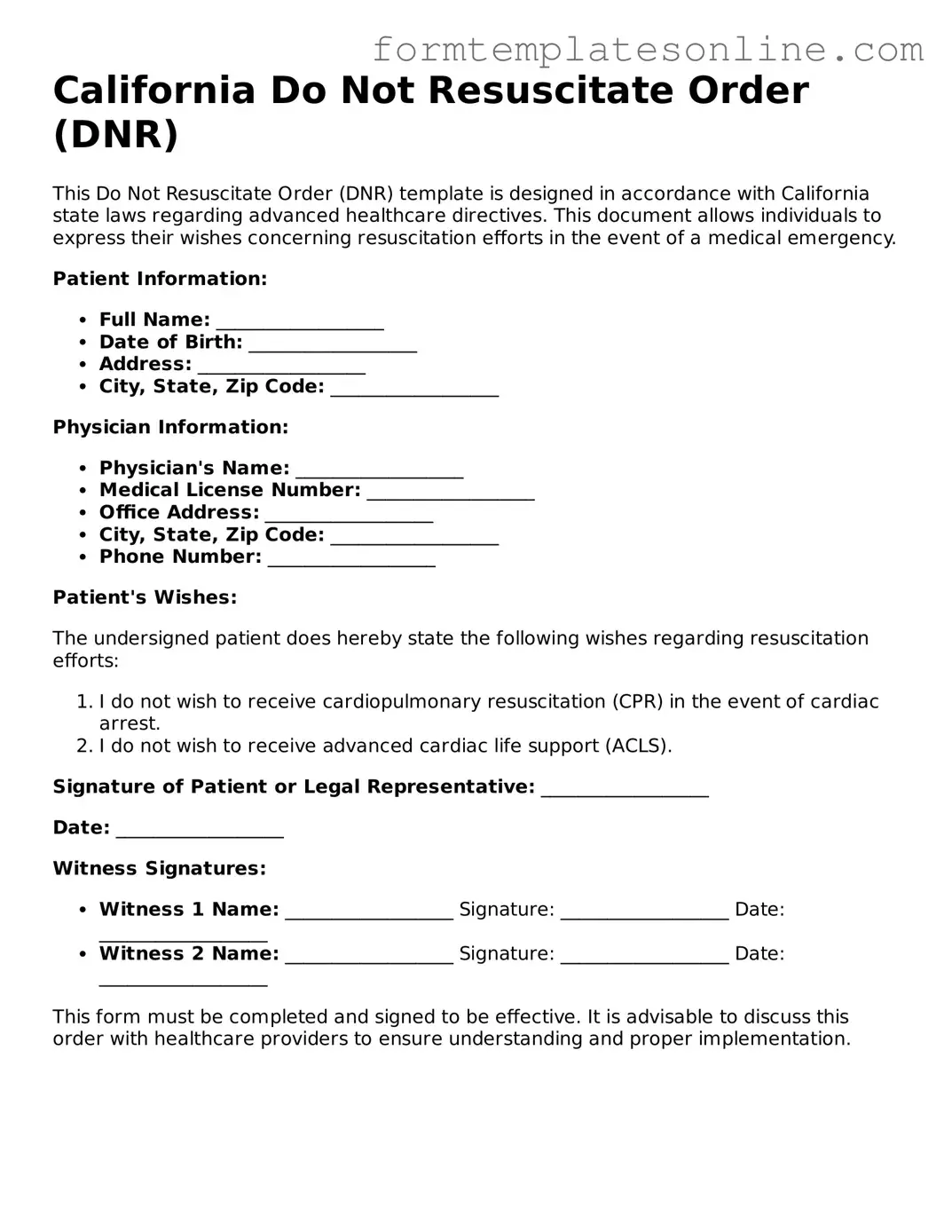What is a California Do Not Resuscitate Order (DNR) form?
A California Do Not Resuscitate Order is a legal document that allows a person to refuse resuscitation efforts in the event of a medical emergency where they are unable to communicate their wishes. This means that if the person’s heart stops beating or they stop breathing, medical personnel will not perform CPR or other life-saving measures. It’s important to have this document in place if you have a serious medical condition and wish to make your preferences clear.
Who can complete a DNR form in California?
In California, any adult who is capable of making their own medical decisions can complete a DNR form. This includes individuals who are facing terminal illnesses or have a serious health condition. If a person is unable to complete the form themselves, a legally authorized representative, such as a family member or healthcare proxy, can do so on their behalf.
How do I obtain a DNR form in California?
You can obtain a California DNR form from various sources, including hospitals, healthcare providers, or online through the California Department of Public Health's website. It’s advisable to consult with your healthcare provider to ensure that the form is filled out correctly and reflects your wishes accurately.
What should I do after completing the DNR form?
After completing the DNR form, it’s crucial to keep it in a place where it can be easily accessed by medical personnel. You should also provide copies to your healthcare provider, family members, and anyone else who may be involved in your care. It’s a good idea to discuss your wishes with your loved ones to ensure they understand your decisions.
Can a DNR order be revoked?
Yes, a DNR order can be revoked at any time. If you change your mind about your wishes regarding resuscitation, you can simply destroy the existing DNR form and inform your healthcare provider and family members of your decision. It’s important to ensure that everyone involved in your care is aware of the revocation.
Will a DNR order affect other medical treatments?
No, a DNR order specifically addresses resuscitation efforts only. It does not prevent you from receiving other medical treatments or interventions. Healthcare providers will still provide care for your other medical needs. If you have concerns about how a DNR might affect your overall treatment plan, discuss them with your healthcare provider.
